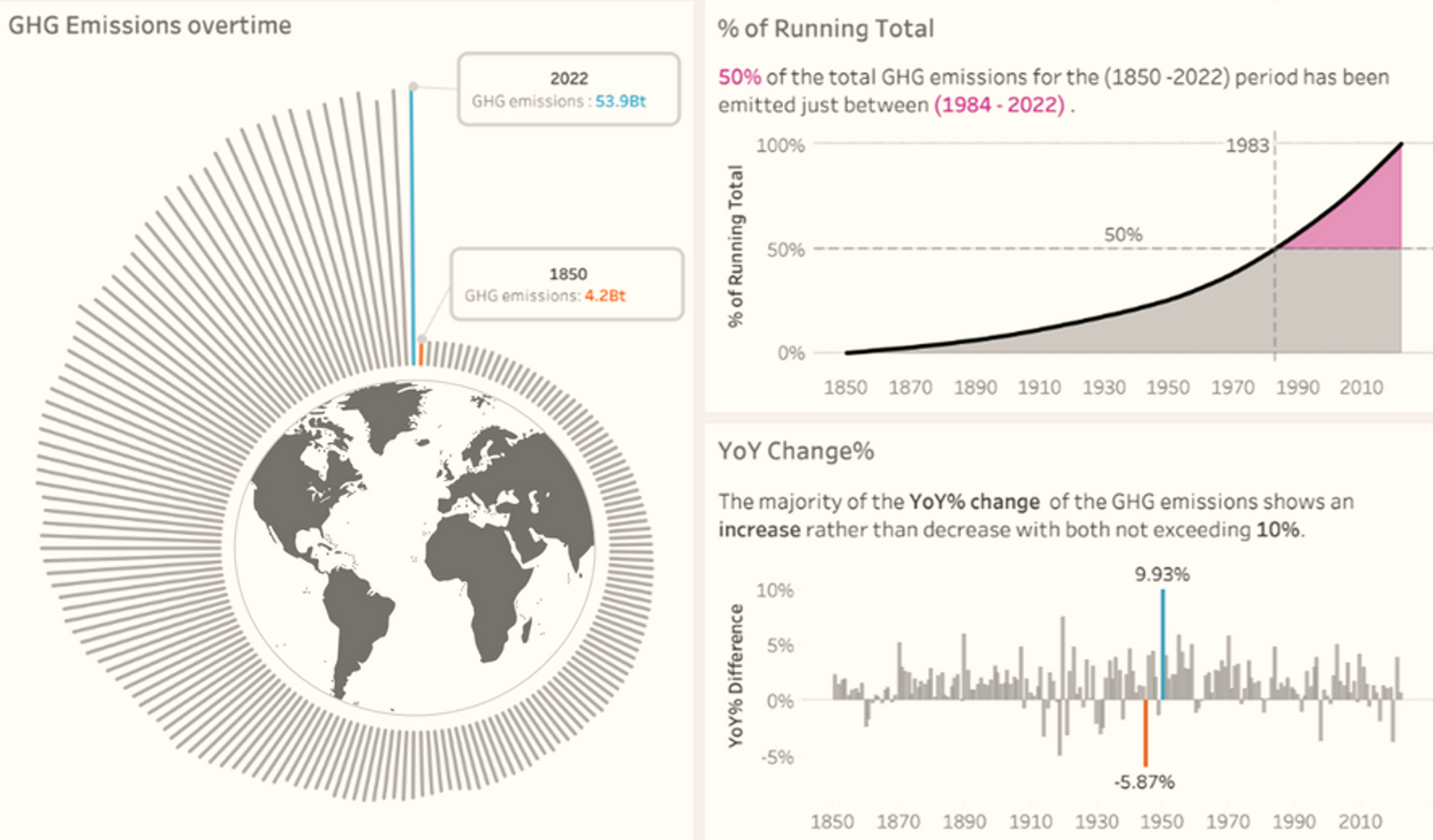GHG Emissions: The Burden on our Planet

Greenhouse gases (GHG) emissions are a serious issue for our world. It has been demonstrated that in recent decades, the rise has accelerated. It is evident that, overall, the trend has been upward over the past 170 years, from 4.2 to approximately 54 billion tons of CO2 equivalent (CO2eq) (an increase of 1183%), between 1850 and 2022. However, the last 40 years of the same period have accounted for more than 50% of all emissions. Put otherwise, a little 23% of that timeframe accounted for over half of the emissions during the same timeframe.
In the meantime, there has been an average annual change of +2% across those years. Additionally, positive shifts have greatly exceeded the negative ones; with the maximum Year-On-Year (YoY) percentage being just below 10% from 1949 to 1950; 4 years following the end of the second world war.
On the contrary, the greatest decrease in YoY% was observed between 1944 and 1945, towards the end of World War II, and it was by 5.87%. This was followed by the 4.99% in 1919, one year after the end of World War I, whilst the third largest decline happened more recently in 2020 during the Covid-19 outbreak.
To sum up, the overall trend reflects the large impact of human activities on the amounts of GHG emissions, as it is directly affected by the major events associated with biggest switches in YoY% change during the period.



